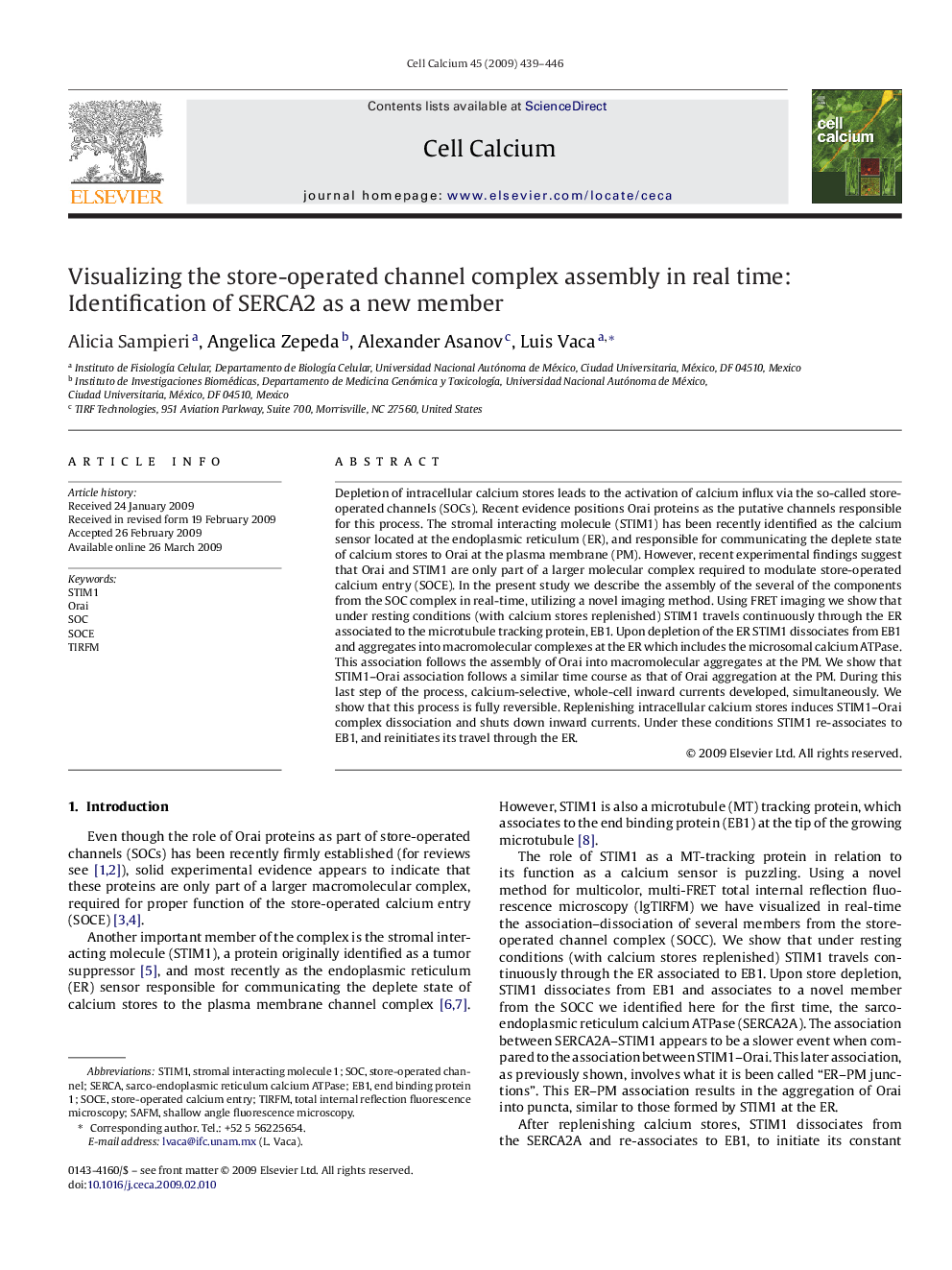| Article ID | Journal | Published Year | Pages | File Type |
|---|---|---|---|---|
| 2166244 | Cell Calcium | 2009 | 8 Pages |
Depletion of intracellular calcium stores leads to the activation of calcium influx via the so-called store-operated channels (SOCs). Recent evidence positions Orai proteins as the putative channels responsible for this process. The stromal interacting molecule (STIM1) has been recently identified as the calcium sensor located at the endoplasmic reticulum (ER), and responsible for communicating the deplete state of calcium stores to Orai at the plasma membrane (PM). However, recent experimental findings suggest that Orai and STIM1 are only part of a larger molecular complex required to modulate store-operated calcium entry (SOCE). In the present study we describe the assembly of the several of the components from the SOC complex in real-time, utilizing a novel imaging method. Using FRET imaging we show that under resting conditions (with calcium stores replenished) STIM1 travels continuously through the ER associated to the microtubule tracking protein, EB1. Upon depletion of the ER STIM1 dissociates from EB1 and aggregates into macromolecular complexes at the ER which includes the microsomal calcium ATPase. This association follows the assembly of Orai into macromolecular aggregates at the PM. We show that STIM1–Orai association follows a similar time course as that of Orai aggregation at the PM. During this last step of the process, calcium-selective, whole-cell inward currents developed, simultaneously. We show that this process is fully reversible. Replenishing intracellular calcium stores induces STIM1–Orai complex dissociation and shuts down inward currents. Under these conditions STIM1 re-associates to EB1, and reinitiates its travel through the ER.
